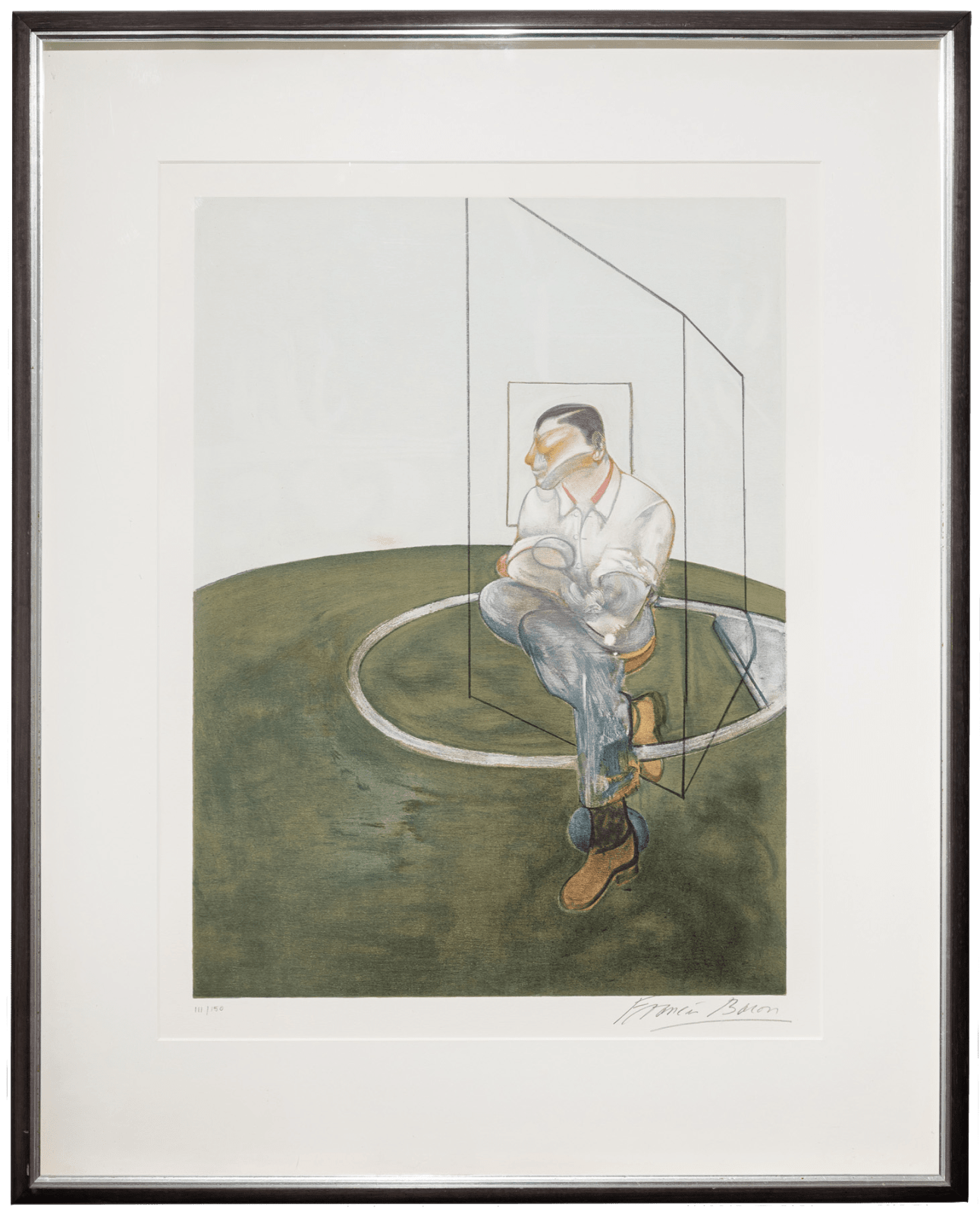Francis Bacon British, 1909-1992
Study for a portrait of John Edwards, 1986
Original lithographs in colours on Arches paper, with full margins, framed
Signed by the artist in pencil, lower right on recto
Signed by the artist in pencil, lower right on recto
Image: 60 × 45 cm
Sheet: 81 × 60 cm
Framed: 89.8 x 72.3 cm
Sheet: 81 × 60 cm
Framed: 89.8 x 72.3 cm
© Estate of Francis Bacon
The present work was made after the right panel of the triptych 'Three studies for a portrait off John Edwards, 1984' Francis Bacon referred to John Edwards as 'The only...
The present work was made after the right panel of the triptych 'Three studies for a portrait off John Edwards, 1984'
Francis Bacon referred to John Edwards as 'The only real friend I ever had'. They first met in 1976, frequenting The Colony Room Club in Soho, visiting exhibitions and travelling abroad together. Edwards once said of their friendship, akin to a father-son relationship, 'I wasn't asking him about his painting or anything like that . . . I asked him once, 'What do you see in me?' And he laughed and said, 'You're not boring like most people.'
Striking in this work is the pictorial layering Bacon constructed around the figure. He would typically need an armature to portray a figure in his paintings, a frame, as it were, in which to compose. Here, the first layer is circular shape and over that stands a framework of lines that might depict a house with a window. Edwards' head is emphatically displayed in the foreground, in front of the window, while his feet indicate his figure hovers over the threshold, both inside and outside the circle. The artist's deliberation accentuates the spatial tension of the picture.
Francis Bacon referred to John Edwards as 'The only real friend I ever had'. They first met in 1976, frequenting The Colony Room Club in Soho, visiting exhibitions and travelling abroad together. Edwards once said of their friendship, akin to a father-son relationship, 'I wasn't asking him about his painting or anything like that . . . I asked him once, 'What do you see in me?' And he laughed and said, 'You're not boring like most people.'
Striking in this work is the pictorial layering Bacon constructed around the figure. He would typically need an armature to portray a figure in his paintings, a frame, as it were, in which to compose. Here, the first layer is circular shape and over that stands a framework of lines that might depict a house with a window. Edwards' head is emphatically displayed in the foreground, in front of the window, while his feet indicate his figure hovers over the threshold, both inside and outside the circle. The artist's deliberation accentuates the spatial tension of the picture.
Provenance
Private Collection Michigan, USA



